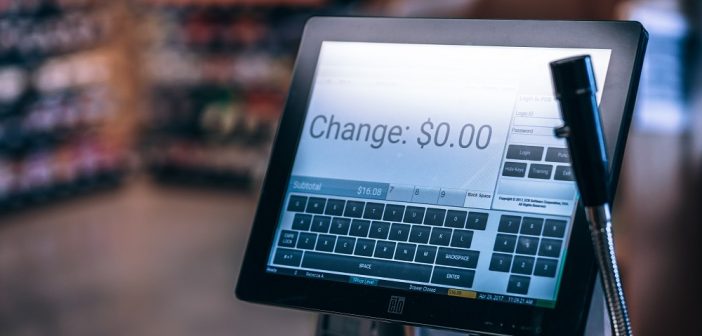An interview with Gaetano Giannetto, CEO of Epipoli/Groupalia
Transparency and quality of algorithms will form the basis of a new alliance and a new balance between companies and their customers.
“Data intelligence becomes a competitive advantage only if you’re able to use it,” according to Gaetano Giannetto, CEO of Epipoli, a company with a long career in the media field that is particularly active in the area of corporate social responsibility. However, it is known above all for introducing gift cards in Italy as an innovative distribution method and a tool for incentives and promotion management. It effectively opened up an entirely new market which, in the United States, is worth US$650 billion a year.
A collector of vintage objects, figurines and old advertising campaigns, Giannetto has the powers of a visionary and the pragmatism of a manager. In 2010, after the Haiti earthquake – and in collaboration with Agire, the Italian Interior Ministry and the Clinton Foundation – he launched the first nonprofit donation card in the world. “When you do something good, you always get something in return. No imbalance can last forever. Money is a form of information. But it’s only a means to an end. We must never confuse the two levels. What's important is people’s desires that increasingly drive the consumer market. Desires are the real black box."

Are we moving from automation of processes to automation of decision making?
Analytics, based on deep and automatic learning, can help us perform specific tasks. It’s not about putting our companies on autopilot, but understanding how much code to bring into the company. It’s about collecting, processing and analysing data in real time to improve customer understanding and strengthening the customer experience. This means developing business, increasing customer loyalty, and ensuring the quality and integrity of data that closely relates to people’s lives.
How is the scenario changing?
With the evolution of the Internet of Things (IoT), for industry and consumers alike, the need to analyse new types of data from different sources, already stored or on the edge, has changed the analytics scenario completely. Today, companies perform a wide range of analytical activities that go beyond data warehouse queries and reporting.
What are gift cards?
Gift cards are non-bank payment cards that allow goods to be purchased or services used in the network of outlets of the companies that have issued them or in third-party outlets: They are a real branded currency.
As the leading European company in the market, we dedicate substantial resources to innovation. We have the first prepaid Mastercard that can be bought in supermarkets and a brand-new rechargeable fuel card that can be spent in every gas station in Italy and complies with the Italian Internal Revenue provision that will come into force in 2018.
From space on physical shelves, we move to high-potential digital space, thanks to a technology platform we developed precisely to manage all processes automatically and the volume of data related to the issuance and use of cards.
What are companies that rely on tools like gift cards looking for?
In the full new economy, someone focused on books as a vehicle to understand the wishes, orientations and interests of readers. We know that model was a winner. Today, gift cards represent an innovation for the entire retail sector, from clothing to entertainment, from travel to food service, as far as insurance for pets. It’s an innovation that has the same potential as a black box. Companies have a need for dynamic and more advanced data management. Gift cards allow them to tap into an automatic discovery that examines each individual transaction in an attempt to automatically identify the data and its meaning.
How can the customer journey and offline profiling be integrated?
The integration of all the metrics makes data navigation practically impossible if it is not well-structured. If we add the digital variable to this complexity – with the management of contact points and everything that revolves around sentiment analysis – then the need to have a big data analytics platform becomes fundamental. We’re working on a project that will allow cross-selling, monetisation and predictive analysis in our database of 7 million unique users by integrating machine learning tools to offer a dynamic discovery interface, connecting transactional and behavioural data in real time.
How do you listen to consumers without chasing them?
Quality data leads you to create quality offers. Companies must learn to have more respect for consumers and build a relationship based on trust. If I build my model on the value of its data, then I must give more value to this relationship.
How are the contact points controlled?
Controlling each point of contact requires an always-on analysis engine. We must have a series of indicators and machines always ready to respond dynamically, whether the customers are in the street, in front of a physical store or on the page of their favourite social network. The forecasting model allows me to understand which of the various channels can become the optimal contact point. With machine learning models, we can further enhance data, identifying user profiles automatically and classifying them for governance purposes. This data management approach is a quick and ideal way to create and manage so-called “logical data lakes.”
Farewell to the panel?
True customer knowledge, which we refer to as the “consumer's genome,” starts with data analysis. We very often have a distorted and conformist image of the consumer because we only see the final effects of a behaviour and neglect to consider the causes. I no longer rely on variables like income, but rather on passions, preferences, and the network of relationships that every person has.
In talking about machine learning and bringing code into the company to make decisions automatically, what do we need to be vigilant about?
Information overload. Any process or any product involves so many variables that make the analysis process more complex. Managing such large volumes of data, the risk of behaving like a monopolist or an “absolute owner” of information does exist. Or at least the temptation exists. And resisting temptation isn’t always easy.
In around 10 years, should we expect a GDPR for algorithms?
Perhaps even before then. Corporate social responsibility will probably also extend to the rules on which algorithms and apps are built. The focus of attention of regulators will be on transparency. To us, this tool is a vehicle of the maximum celebration of “neorealism” because consumers need tangible things and maximum freedom of choice. My highest aspiration has always been to create value in the most transparent way possible. This is undoubtedly the key to beating the competition in the future.

